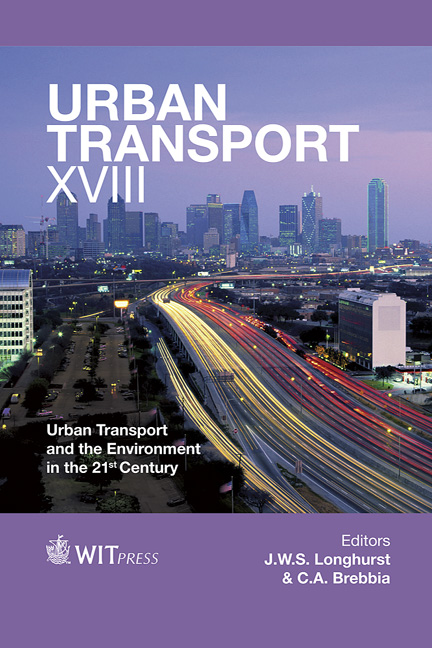Environmental Breakeven Point: An Introduction Into Environmental Optimization For Passenger Car Replacement Schemes
Price
Free (open access)
Transaction
Volume
128
Pages
11
Page Range
39 - 49
Published
2012
Size
413 kb
Paper DOI
10.2495/UT120041
Copyright
WIT Press
Author(s)
M. Messagie, F. Boureima, N. Sergeant, J. M. Timmermans, C. Macharis & J. Van Mierlo
Abstract
This paper gives insights in how to introduce environmental aspects in automobile replacement policies. These policies aim at accelerating the adoption of cleaner vehicles by taking old vehicles out of the fleet, while supporting the vehicle industry. A scrappage policy must take the whole life cycle of a vehicle into account. Scrapping an old vehicle and manufacturing a new one creates additional environmental impacts which must be taken into consideration. This analysis is based on the comparison of the well-to-wheel (WTW) emissions with the cradle-to-grave (manufacturing, dismantling, recycling and waste treatment) emissions for vehicles with different ages, Euro standards and technologies. Optimizing vehicle’s LTDD (Life Time Driven Distance) causes an LCA (Life Cycle Assessment) challenge, combining two contradictory environmental engineering concepts. Letting a vehicle have a longer use phase avoids specific impacts during manufacturing, such as mineral extraction damage and energy usage. Conversely, replacement of an old vehicle with a new, more efficient one can lower the impacts introduced during the use phase. To differentiate between vehicle technologies it is investigated how long it takes until a newly produced car has an environmental return on investment. This period is called the environmental breakeven point. Keywords: environmental breakeven point, life cycle assessment, scrappage schemes, sustainable mobility, well-to-wheel analysis, electricity production.
Keywords
environmental breakeven point, life cycle assessment, scrappage schemes, sustainable mobility, well-to-wheel analysis, electricity production.





